Th e Ma r qu ee













06 Breaking down the history of the Battle of the Axe New cafes open on both campuses 18 Recipes to cure winter sickness


















TheMarquee newsmagazine is a student-generated publication of Marcus High School. It is produced, edited and maintained through the efforts of the school’s advanced journalism class. The Marquee is designed to serve the school and community as a forum for open discussion and student expression. The Marquee encourages letters to the editor as part of its mission to educate, inform and provide an open forum for debate. All submissions must be signed. The staff reserves the right to edit all material. Editorials reflect the opinion of the staff, not necessarily that of the administration. Signed columns or reviews represent only the opinion of the author. Advertising rates are $70 per 1/8 of a page, with discounts available. Patron ads are available for $100. Online advertisements are also available. For more information call 469-7135196. The Marquee is a standing member of ILPC, TAJE, ATPI, CSPA NSPA, JEA and Quill and Scroll.


makes history with first same sex marriage in Denton County
Student starts business for grandfather with Alzheimer’s
editor in chief Alex Thornfelt managing editor Muna Nnamani online editor Hyunsung Na design editor Jennifer Banh photo editor Jayni Gogineni business manager Aishani Raju reporters Garrison Acree Emily Couch Roslyn Dobbins Raksha Jayakumar Owen Oppenheimer Lex Paull Kaelen Reed designers Sarina Mahmud Dylan Sorensen photographer Leslyn Lindsey Ana Myers-Olvera adviser LaJuana Hale principal William Skelton
The main campus cafe stand, Java City, reopened on Jan. 9 now that the cafeteria is more fully staffed after the pandemic. M9 reopened the cafe stand in November, and it was met with a high demand. Long lines have formed at the freshman campus for treats such as fresh coffee, smoothies, baked goods and fruits.
The cafes on both campuses were originally shut down during the COVID-19 time period due to a lack of available workers.
“We were down to seven,” cafeteria manager Kelly Gray said. “I did a lot during the pandemic time, and every school is affected.”
LISD has hosted job fairs and advertised their staffing opportunities on social media to attract more individuals because the number of staff still hasn’t recovered completely since COVID-19.
Cafeteria workers were given a pay
The cafe is open in the mornings before school and during lunch. The menu offers a variety of coffees, teas and smoothies in the drinks section. For snacks, the cafe has fruit cups, cookies, bagels and muffins. Java City offers students a more diverse selection compared to what is served in the regular lunch lines.
“Some students maybe have an aversion to some of the things or are done with redundancy,” Payne said. “It’s been real popular with our students ever since it opened.”
Zulmma Davalos is one of the main cafeteria workers that runs the cafe, and she said another reason for the cafe coming back was the high interest from students.
Freshman Paola Jones stops by the cafe often and enjoys its options.
impact,” Payne said. “[The cafe] still serves within the nutritional guidelines, but it allows for more options.”
Payne said the cafe was introduced to M9 first because of its smaller population that is easier to manage. In order to offer these new options to all students, the school brought the cafe to the main campus as well.

Students on the main campus, such as sophomore Nima Sherpa, are glad the café is finally open.
“I don’t want to walk all the way to M9 for a cup of coffee,” Sherpa said. “I want my coffee as soon as possible.”
For the first few days, the cafe will be serving mainly drinks, like coffees and smoothies. The stand will accept money from a student’s lunch account or cash.
raise for the 2022-2023 school year, increasing the salaries of current and new employees. According to M9 Assistant Principal Amy Payne, the school now has adequate cafeteria staffing, so the decision was made to reopen Java City.
“I definitely use it more than I should,” Jones said. “It’s a pretty good variety.”
The cafe’s goods are set at similar prices to a meal in the cafeteria, so students often buy from one or both.
“Honestly, I think it has a positive
The increase in staffing has helped reintroduce programs to students and is bringing the school back to normal.
“The nutrition staff at LISD felt it was very important to allow the students to have choices,” Payne said. “We’ve always been advocates for it.”
[The cafe] still serves within the nutritional guidelines, but it allows for more options.
- Amy Payne, M9 Assistant Principal
“

The summer rain poured down as senior Anagha Remesh packed the final suitcase in the trunk. Tears rolled down her cheeks as she stared at the luggage filling the car. Fear bit at her at the thought of leaving India, knowing that today might be the last day that she sees her grandpa the last day he will remember her.
She stood there looking at her grandfather, wondering why she had to go. Her mind, rambling what if I can’t see him again? What if this is my last
chance to see him?
“I don’t want to go,” Anagha said. “Promise me you won’t leave me.”
Looking down at her, he gave her a hug.
“I promise,” her grandfather said.
The car pulled out of the driveway and behind the rain covered window she saw him the man who inspired her.
She saw the man for whom she knew she would always fight for a cure.
In February of 2021, an idea sparked for Anagha: a fundrasier. She wanted more than anything to help She would start a baking business with her friend junior Nidhi Thakker with all of the profits going to Alzheimer’s research. They planned cost-effective ways to start and named their business Delicate Confections.
They wanted to have a wide variety of baked goods. Cupcakes, brownies, muffins, banana bread and
even blueberry lemon bread for large orders. Snickerdoodles, M&M cookies and brownie bites became their best selling treats.
After weeks of preparation, they made their first sale. They started small by handing out flyers to neighbors and selling door to door. Advertising on Instagram, distribution of flyers and DECA raked in more sales.
Three months after the start of their business, Anagha and Nidhi took on their first event, Art in the Park. This annual event hosted by the Community Activity Center was a huge undertaking for the two.
The day before the event, word spread that it was going to be much larger than the expected 300. Instead, they realized they’d have over 500 people. Whipping into action, Anagha started baking more, driven only by the reason she was doing all of this in the first place her grandfather. What started as 200 cookies became 350 in one afternoon. Despite the burnout, she kept pushing.
With 60 slices of banana bread, blueberry lemon bread, coffee bread, 300 cookies, 96 brownie bites and 40 bags of garlic knots, they set up their booth for business.
Nervously, she sat behind her booth. Customers passed by, asking about her desire to raise money for Alzheimer’s. Anagha’s nervousness dissolved as she began to step out of her shell, and from behind the protection of her booth.
She and Nidhi started walking up to customers directly and talking about their business to spread awareness of Alzheimer’s. Some customers who had family members with the disease were touched by their mission.
You see this person that you’ve known for your entire life, and they’re slowly becoming someone they’re not. And there’s nothing you can do to stop it.
- Nidhi Thakker, 11
“We were an outlet to these people,” Anagha said. “That’s what I loved about this fundraiser. I was able to talk to them, connect with them and be able to figure out their stories.”
That event alone raised $500 in profits for the Alzheimer’s Association.
Anagha and Nidhi’s confidence flourished, giving them the push they needed to challenge themselves with other large events like Chalk the Walk and the Christmas Parade.

Last year they were able to donate $1,300, and after less than two years, they’ve raised more than $2,000.

“Whenever there was a challenge, I pushed my way through it,” Anagha said.


Their determination has kept them going to contribute to the fight for a cure.
Anu Nair, Anagha’s mother, says she has seen Anagha grow as a person during the making of her business.
“Anagha is very determined and hardworking,” Anu Nair said. “It has given her confidence. She can do well if she puts her mind to it.”
- Anagha Remesh, 12

When running a business gets difficult, she reminds herself of why she is doing all of this in the first place her grandfather.
She thinks back to before his diagnosis.
Delicate Confections prepares for a promotional event, offering a variety of cookies, cupcakes and muffins as well as garlic bites and brownies.

How they would play games and him chasing after her around the house but now he’s too tired to run. She remembers how he used to be the life of the party, but he isn’t present in conversations anymore. Now he forgets day-to-day words and stops tasks in the middle of doing them.
“It just broke my heart to see him like that,” Anagha said.
Her partner, Nidhi Thakker, although not directly affected by family with Alzheimer’s, has seen how hard this has been for Anagha. Nidhi has related to the feeling of loss while watching her grandfather lose some of his quality of life after a head injury.
“You see this person that you’ve known for your entire life, and they’re slowly becoming someone they’re not,” Nidhi said. “And there’s nothing you can do to stop it.”



Anagha looks forward to going back to India. She enjoys returning to the roaring cities, the colorful saris and looking out the window at the rice fields she will pass on the drives. But most importantly, she wants to wrap her arms around her grandpa.
feature Jan. 18, 2023 design Sarina Mahmud
“Whenever there was a challenge, I pushed my way through it.Photo submitted by Anagha Remesh Anagha Remesh (right) and Nidhi Thakker (left) organize a booth at the CAC Christmas Parade. All profits went to the Alzheimer’s Association. Photo courtesy @delicate.confections
The deafening roar of the crowd echoes across the stadium, as the Marauders offense drives down the field. Play by play, the Lewisville defense is pushed back, until they’re only a handful of yards away from the end zone. Third and goal, the ball is snapped to junior quarterback Cole Welliver as a wave of defenders begin to chase after him. Running to his right, he sees junior tight end Aidan Grummer. The ball barrelling toward him, Grummer catches it close to his chest in the endzone. Horns blare as teammates celebrate their touchdown with high fives. Enthusiastic cheers and disappointed groans simultaneously erupt from the stands.
On Oct. 21, 2022 the intense annual
Battle of the Axe ended in a 17-14 Marauder loss after a game-sealing 31 yard field goal from Lewisville kicker senior Freddy Joya. Though the team lost, it was hard to miss the excitement and energy among the two schools.
To some, it may seem silly. Battling over an axe that anyone can buy at a hardware store. But for the community, it’s a symbol containing the rich history of the 36-year-long competition.
While many know the rivalry of the “Battle of the Axe,” not many remember the man that started it all — Jesse Jones.
• • •
Sherman, Texas, nicknamed “The Athens of Texas,” is a small, quiet town about an hour away from Flower Mound. The town is known for its champion bass fishing, sailing and hiking. But most famously, it’s the home to the first Battle of the Ax. Jesse was born on August 13, 1936 in Melissa, Texas and attended Sherman High School, where he witnessed the original rivalry that began in 1901.
A rivalry game that drew in packed opposing crowds of Denison yellow and Sherman maroon had typically sold out in 13 minutes. A rivalry where players competed for victory and honor. A rivalry named the Battle of the Ax, where the winner brings home the ax with a weight heavier than its handle and blade. A weight of 122 years of tradition, competition and pride.
Starting 85 years prior to LISD’s, it’s the oldest high football rivalry in the state.
The same high school tradition inspired Jesse to meet with Marcus and Lewisville’s first principals, Larry Sigler and Doug Killough to create the Battle of the Axe in his new home.
Lewisville was the first high school that opened in the district in 1897. Marcus was the second, opening in 1981. Jesse noticed an immediate rivalry between the two schools.
The first step was to make the infamous axe. Created by LHS shop students and aided by shop teacher Garland Kimmel, the trophy looks just like a standard axe, but when carefully examined, the year of 1986 is engraved.
Jesse’s wife and retired Marcus English teacher, Nancy Jones believes that the axe adds even more excitement and a sense of honor for the schools.

“He installed the axe as something to make the game even more special,” she said.
The Battle of the Axe has also been memorable for students and staff.
For coach Preston Jund, it’s made an impact on his entire career. He coached the defensive line at Lewisville for five years and has continued to work with defense after transferring to Marcus in 2012.
Having instructed both teams, Jund has seen the Battle of the Axe leave long-

lasting impacts on players.
“That trophy definitely produces a sense of pride within the young men,” Jund said. “It’s a big part of what builds school spirit around our sport.”
Senior running back Jake Ballard believes that the event is a great way to help the team perform to the best of their abilities.
“Coaches look forward to playing the game and hopefully call it their best,” Ballard said. “The players look to do the same.”
Their first child, K. Kaye Nyquist now serves as LISD’s Central Zone Secretary. She fondly remembers the feeling of being at the Battle of the Axe with her father and children.
“My daughter teaches at [Lewisville High School],” Nyquist said. “So when she tells her kids that her grandpa’s the one who started it, they’re always like ‘No he wasn’t.’”
Jesse retired from his job as a banker at
North Texas Bank to teach at Marcus and work alongside his wife. He worked as a substitute teacher and special education aide for five years before retiring in 2000.
“His heart was at Marcus for sure,” K. Kaye said.
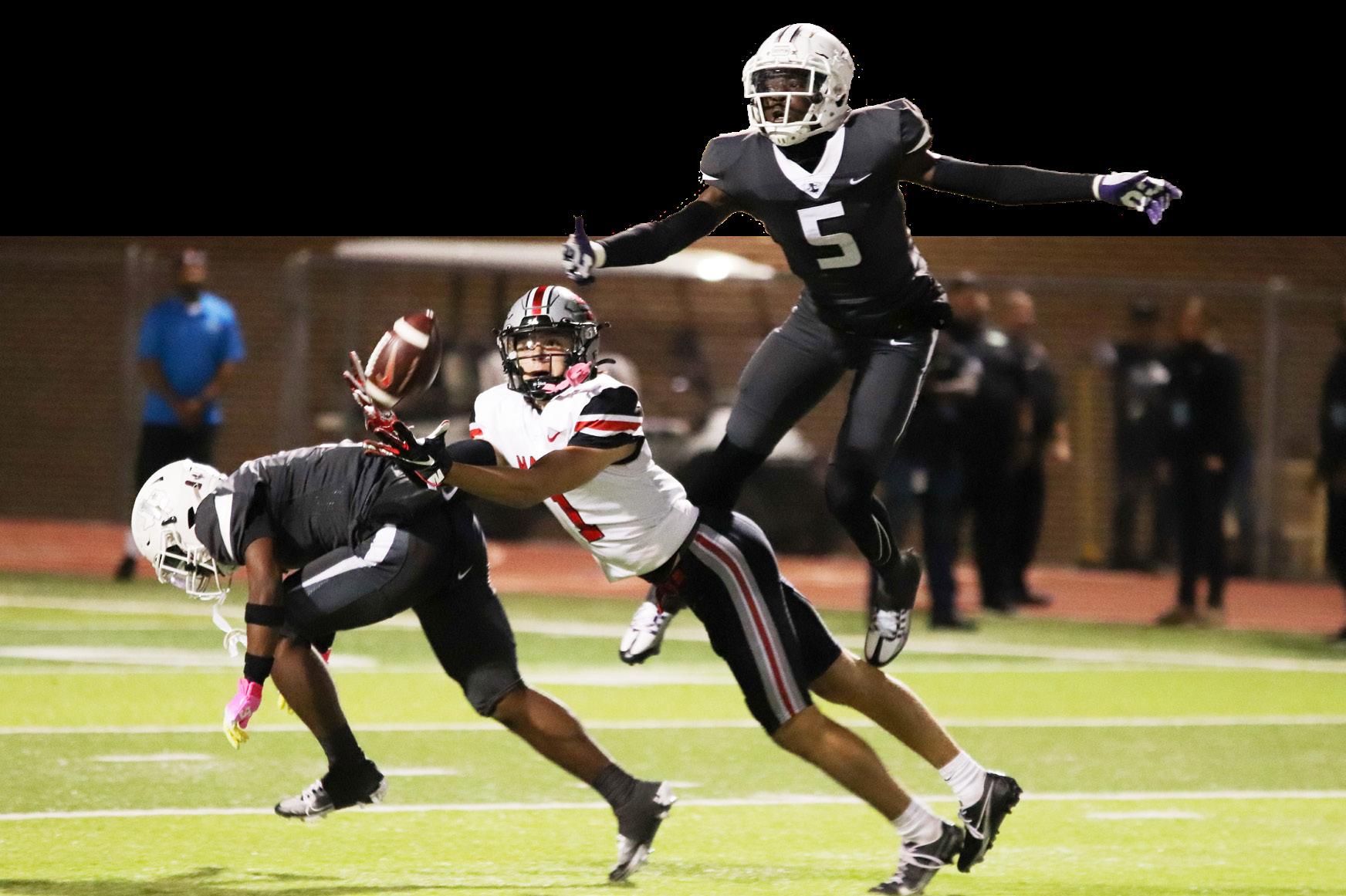
Jesse passed away in 2009, but his tradition continues to be a part of the two school’s soul and pride.
“He was very loving and loved his family and his job,” Nancy said. “He was just a super individual.”
After his passing, his legacy still remains. The Battle of the Axe produces exciting games each year, but it all began with Jesse’s own passion and love that he poured into the game.
“I hoped it would be something very special because it was always special in Sherman,” Ms. Jones said. “I’m so glad that it has been something that has been carried on.”

sports Jan. 18, 2023 design Jennifer
BanhSenior wide reciever Isaac Khattab dives for a pass from junior quarterback Cole Welliver during the 2022 Battle of the Axe. Photo Alexandra Dean
Sherman and Dennison’s Battle of the Axe is created
That trophy definitely produces a sense of pride within the young men …It’s a big part of what builds school spirit around our sport.
-Coach Preston Jund
Jesse Jones is born in Melissa, Texas
LISD’s Battle of the Axe is created 1995
Jesse Jones begins teaching at Marcus
What was your favorite childhood show? Probably “Bubble Guppies”.
If you could raid one celebrity’s closet, whose would it be? Kanye West.
Favorite dcom?
I actually don’t know any Disney channel movies, uh, “Teen Beach”.



What is your ideal vacation? My dream vacation is Turks and Caicos.
What is the most interesting thing you’ve eaten? I’ve eaten a frog.
Edward or Jacob, and why? Jacob — I don’t even know who that is.
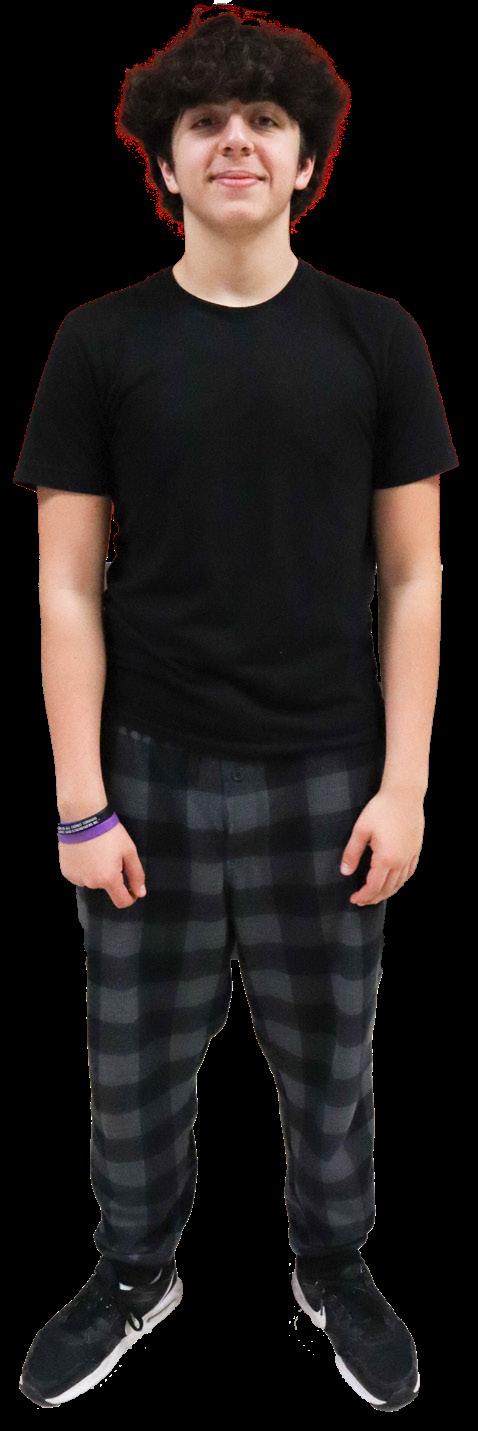
What was your most embarrassing memory from school?
One time I got a 12 on a math test.
Most underrated ice cream flavor? Definitely mint chocolate chip.
What’s your comfort movie? Probably The Grinch.

Racism has been an issue in the U.S. for generations, and it often finds its way into schools.
Just this month, the n-word was spray painted on Allen High School’s Black quarterback’s house. His parents immediately pulled their kids from the school district.

Last week, Lubbock-Cooper ISD passed a resolution denouncing racism, after parents of color sued the district for remaining passive in handling the continuous bullying and harassment of their children.
Incidents like these have occurred across the country and even at this school.
With minorities making up less than one third of our student body, students of color have reported feeling out of place, uncomfortable and scared to stand up for themselves when faced with racist comments and behaviors.
According to UNT Race and Gender Studies Professor Tracy Everbach, students may make racist jokes because they heard them at home.
“If it’s not acceptable in their home, they just might be trying to be provocative, possibly cruel,” Everbach said. “Which sometimes teenagers can be, as a way of gaining social hierarchy.”
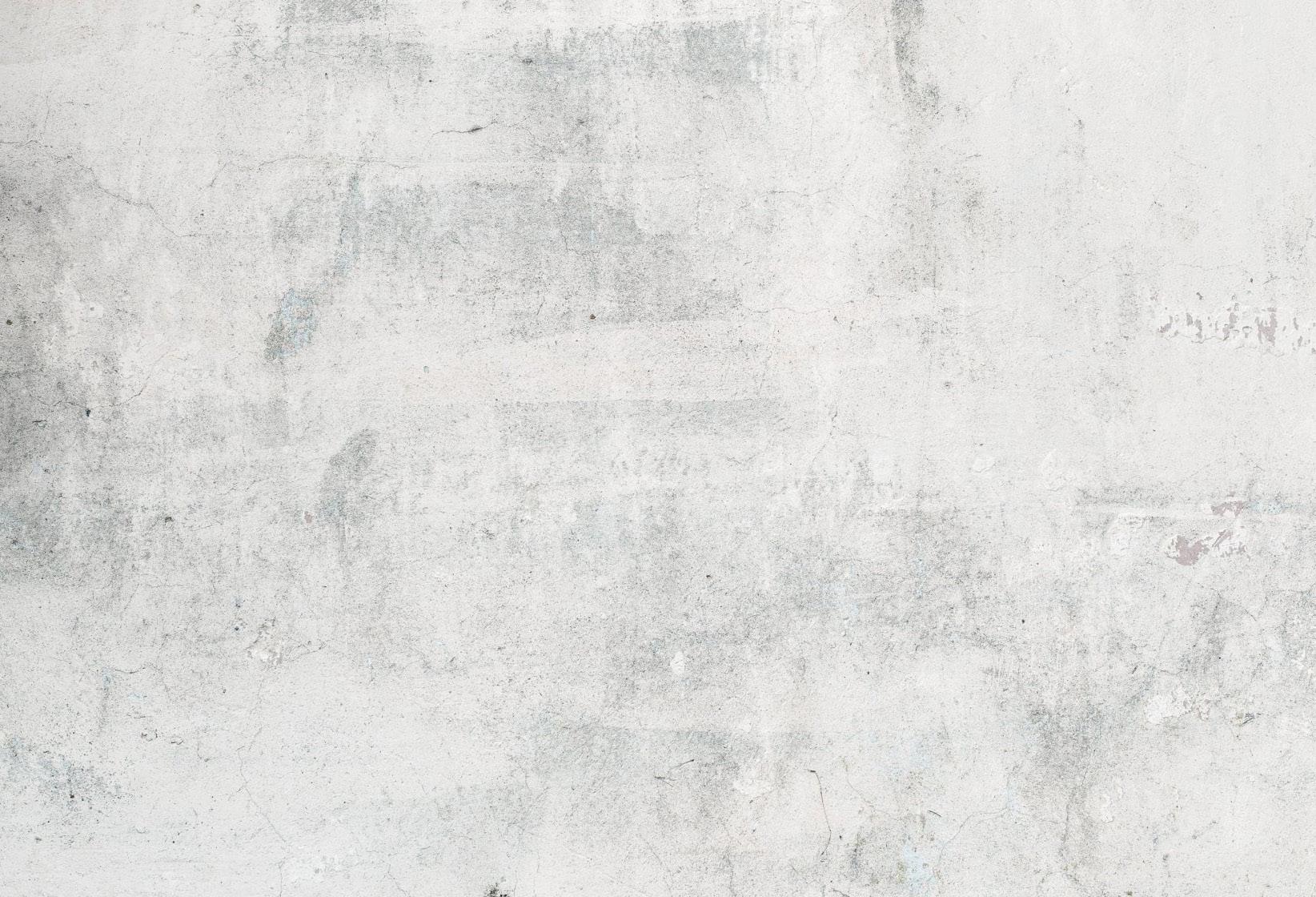
Senior June Kim, who is Korean, has heard her classmates make jokes about her race since kindergarten.
“It’s not ever really about just the one specific joke or comment being made,” Kim said. “It’s about the overall buildup of these tiny jokes and microaggressions being built up over several years.”
To fit in with their friends, students of color can even feel pressure to make
jokes at their own expense. Senior Rahul Ramesh, who is Indian, used to do this to try to connect with his White friends.
“I stay away from that now,” Ramesh said. “And if anyone I know behaves like that, then they weren’t really my friend in the first place. And the people around me don’t make jokes like that. But when I was younger and more immature, I definitely did.”
Sophomore Vi Ngo, who is Asian, says when minority students actually confront the people who are making the racist comments, they’re usually made to feel like they’re overreacting.
“It’s so ingrained and people feel so normal about saying it,” Ngo said. “And then we are made to feel stupid whenever we get offended by saying, ‘Oh, it’s just a
joke.’”
After growing up in Flower Mound, students of color have reported having to get used to the undercurrent of racism.
“Me personally, I have become very numb and it doesn’t really get to me anymore, but only because it’s been said to me ever since I was in kindergarten,” Kim said. “And so that should never be a feeling and an experience that people have to endure. Especially at such a young age.”
Everbach encourages students who are being picked on to stand up for themselves. Even if it isn’t received well, she believes it is healthy to speak up for yourself.
“If they don’t believe you, fine…You’ve made progress,” Everbach said. “You’ve gotten to talk about it. And I think that’s what’s important.”
Microaggressions are a more subtle form of racism. Everbach defines them as words that are hurtful because of someone’s race, gender or sexuality.
“It can be intentional or it can just be out of a result of ignorance,” Everbach said. “But it’s something that hurts another person.”
Ramesh has faced microaggressions from his peers since elementary school.
“People would make fun of my religion all the time, make fun of Indian accents,” Ramesh said. “And I was typically made to feel like an outsider, just because of my
skin color, or my culture.”
As he got to high school, the treatment dimmed to stereotyping.
“People won’t make assumptions about you, or your interests or your personality, or your religion or your accent or anything if you’re just a White guy, but people will assume those things about me immediately,” Ramesh said. “They’ll assume I’m a nerd, because I’m an Indian guy with glasses.”
Everbach says that because it is hard to admit to having said or done anything
racist, it can be difficult to handle being confronted about having used microaggressions.
““Nobody wants to admit that,” Everbach said. “So I think that they get defensive because it’s self preservation. You know, ‘I can’t do that. I’m not a racist.’”
However, she says it is important to consider how the recipient of the microaggressions feels.
“I’ve had microaggressions aimed at me for being a woman,” Everbach said. “You feel pretty horrible and you also lose respect for the person.”
design Alex ThornfeltThe school has a 31.7% minority enrollment rate. While this amount has increased about 7% in the past five years, this still means that less than one third of the population are minorities.
Senior Rahul Ramesh says that in a mostly White community, students of color can find it more difficult to fit in.
“It can be hard as a person of color to relate to your peers, and you can feel more excluded,” Ramesh said.
Junior Harsh Singh, who is Indian, grew up watching Indian movies and listening to Indian music. When he started attending majority-White schools, he felt like he couldn’t interact with his White friends well enough.
“I grew up not understanding a lot of American culture and not understanding a lot of the pop culture references that people would refer to as I was growing up,” Singh said. “And I sort of just had to learn really quickly what those references were.”
While Singh sees and appreciates opportunities like this for students of color to showcase their culture, he says that everyday life feels like it lacks diversity.
“For the most part, it is very Eurocentric and does feel like you just have to immediately understand all of these references and assimilate into American culture,” Singh said.
The Student Advisory Group was created six years ago to brainstorm ways to make all students feel included. This racially diverse group meets with the principal daily to work on ways to unite the different student groups.
To represent the different cultures on campus, they organize a yearly fair called Celebrate Marcus. Students who participate in the fair show presentations about their culture and hand out food..
Statistics from 2020-2021, courtesy of Lewisville ISD

Racial representation on the school level can look like race and culture-based clubs, and events celebrating different people groups. Senior June Kim said that to feel like they belong, students of color should carve out communities for themselves on campus.
While she believes that the school can take steps to make students of color feel celebrated, these efforts should not be performative.
“To show genuine care and genuine inclusion for all these different cultures, I think that would be something that would be really beneficial to our district and our school and our community,” Kim said.
Matthew Morris is the district’s Director of Diversity and Student Engagement. Morris helps make sure that LISD schools represent students of different backgrounds.
This year, he is focusing on improving the district’s annual Martin Luther King Celebration in January, which the school has hosted for the past three years, and the school’s yearly HBCU fair in February, which is Black History Month.
At the beginning of the school year, Morris chose two or three students from each high school to form a student advisory group that works with him to plan the MLK celebration and the
in-depth Jan. 18, 2023
HBCU fair.
“You may not be able to see it right now, but you can’t give up on the work that’s being done behind the scenes,” Morris said.
The school also has clubs that support different races, such as the Black History Club. During race history months, students also give historical fun facts over the announcements — an endeavor that is organized by the clubs.
Everbach believes that joining a race based club can be a positive experience for any student, regardless of their race. For example, attending Black History Club to learn about African culture can help students be allies to their classmates.
Ramesh says that students have the power to make their classmates feel accepted at school.
“I feel like, as students, it’s up to us to make other students feel like they don’t have to change anything about their culture, in order to fit into a friend group,” Ramesh said. • • •
Everbach encourages students of color to open up to people they trust about any discrimination they face. She advises against staying quiet.
“Don’t suffer in silence, because things will only get worse,” Everbach said.
design Alex Thornfelt
We interviewed seven students of color about experiences that they’ve had in the community because of their race. From coping with daily alienation to handling racism, they share their stories below.
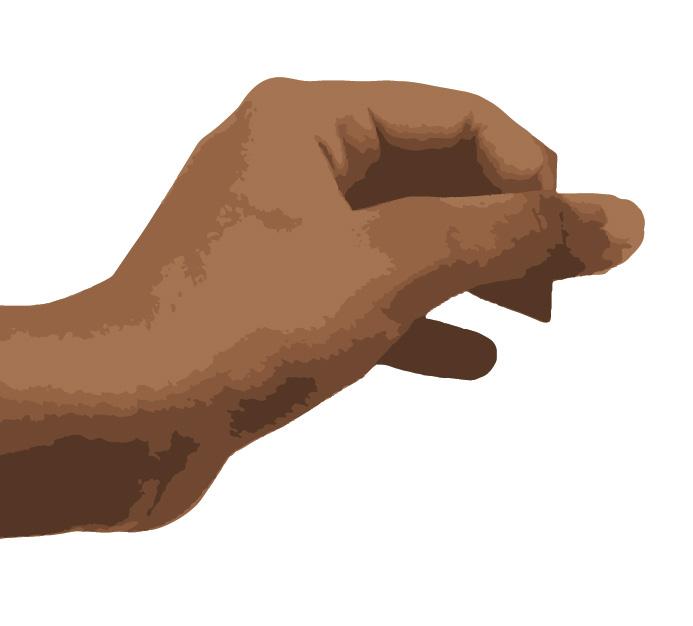

I think the worst by far has got to be my little sister. She goes to [middle school] and the racism over there is absolutely horrible. We have students in her class saying “negro” all the time, especially in Spanish, because they think they can get away with it. We got people saying the N-word, saying the N-word on tape, and talking about and boasting about how they say the N-word fifteen times a day.
This was actually like a month ago. I walked up to this lunch table and was talking to a friend. Very casually, somebody sitting at the table had made a comment about eyes while I was there, and was just basically making fun of my eyes and then proceeded to mock my eyes by making his eyes smaller.
Something like that is definitely more on the extreme level, but it is definitely something that people definitely experience. And I will say, that was a shocking experience to me.
Whatever type of Asian you are, there’s this sort of Model Minority myth where you’re always expected to outperform your peers just because you’re Asian, and that’s what Asians do. They’re great at everything.
I receive a lot of comments about, “Oh, of course he got it. Of course the Asian guy got it.” I mean, they don’t outright say, “Oh he’s Asian, that’s why you got it.” But a lot of times, it feels like the hard work that was put into a task is just discounted and put aside simply because I’m Asian.
There are definitely a lot of kids who don’t think that White privilege is real. Personally, I have four jobs because I have other stuff going on outside of school. And so kids are making fun of that. They’re like, “Oh, you’re just working so you can keep your green card.” They make everything about race. You know, if you take away my skin, I’m literally the same as you.

I’d probably say just having to fit in with people that maybe don’t have your best interests at heart. I feel like if there was a lot more diversity, you could find a group of people, whether it’s just like a small group or if it’s a larger group, where you have a common interest or you have a common understanding.
I had a classmate that has used some racial derogatory language with me, kind of like harassment. I was walking home and he kept calling me that well-known word when I was trying to walk home, and it was really bad.

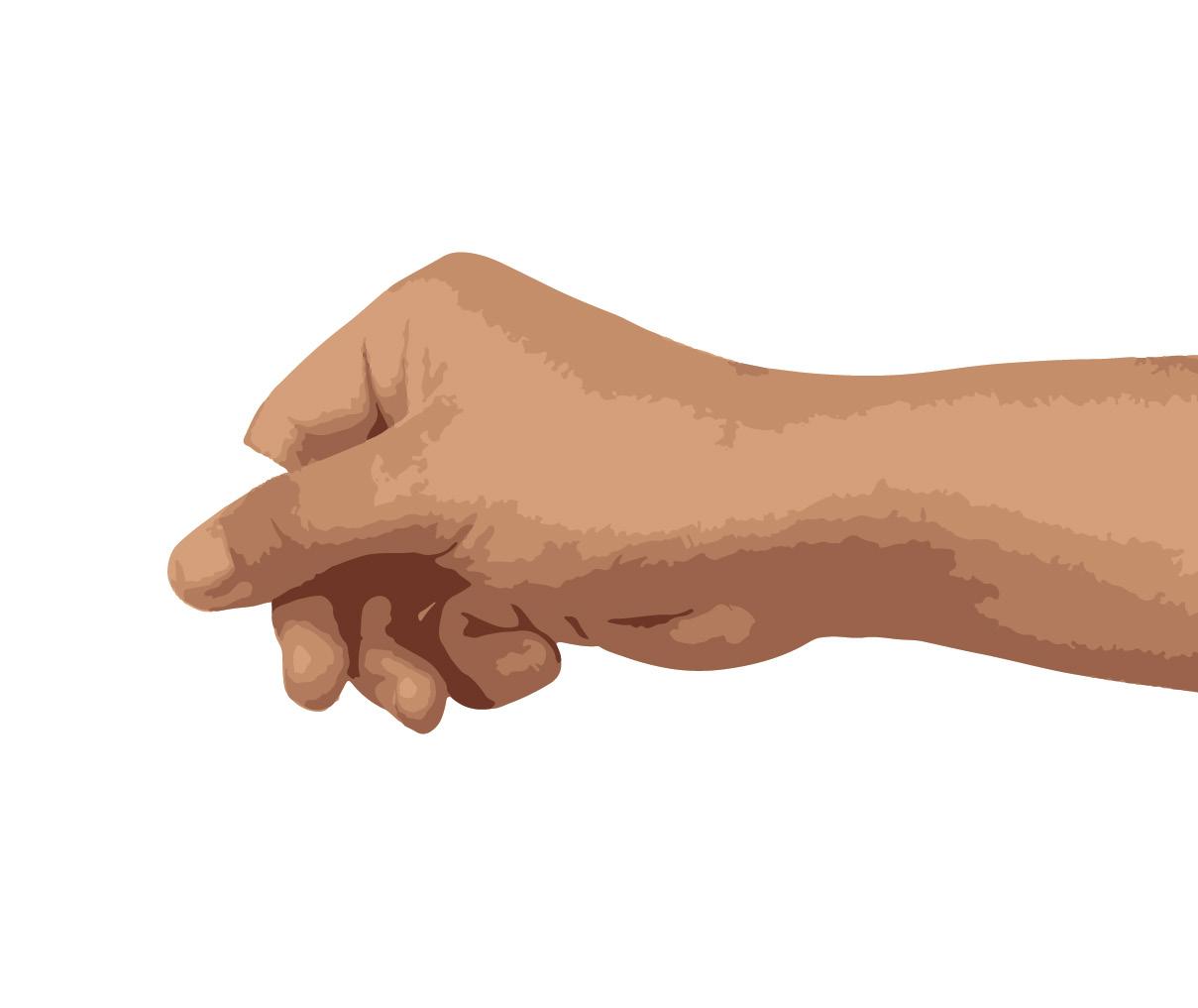
I just feel like a lot of people don’t understand the struggles that we go through because it’s very different when your parents didn’t have the academic abilities that you did. There’s a lot of pressure on you to do well in school.
As sophomore step team captain Jaida Johnson’s boots scuffed against the gym floor, she fought the panic in her stomach.

The panic had been rising all morning. She had skipped breakfast because eating felt impossible. She spent second period stealing glances at the clock. And in the dance room just a few minutes ago, she and her teammates rehearsed the steps that they would perform in front of the entire school.
Since the team had gotten the job performing at the pep rally weeks earlier, Jaida had been parroting anxieties like a broken record.
“I just kept saying, ‘I don’t know how the school is going to take step,” Jaida said. “I don’t know how the school is going to see step.’”
She stepped onto the floor with her teammates and took in the bleachers full of students.
Today, she would find out. • • •
Stepping is a percussive type dance that incorporates stomping, clapping and spoken word. A huge part of African American culture, the dance has its roots in South Africa. Jaida knows that the students who watch her and
representation matters,” Jaida said. “Because since I grew up watching all that, that made me more like, ‘Oh, they did it. Why can’t I do it?’”
Her family moved to Lewisville in sixth grade. After watching the Huffines Middle School step team perform at a pep rally, she tried out.
The move from Mississippi to Texas had been jarring. But Huffines’ step team was so welcoming, it felt like she had never left Jackson.
Jaida stepped on the team for a year before COVID-19 struck in the middle of seventh grade. After that, her family moved to Highland Village.
• • •
Mask on, Jaida walked into her eighth grade theater class. It was her first day at Briarhill Middle School.
- Jaida Johnson, 10the step team may not understand its importance, but for her and the rest of the Black community, stepping represents community.
She first learned the importance of community in Jackson, Mississippi, where she lived from birth until sixth grade. She remembers those years as some of the best in her life. Her grandmas, aunties and cousins loved spending time with each other, and her huge family often gathered to eat good food at reunions.
“Just being with people who can relate to you — there’s nothing like that,” Jaida said.
She learned about stepping in bits and pieces. After watching sororities and fraternities at HBCU college fairs or movies about high school step teams, she warmed up to the idea of trying it herself.
“That’s another reason why
Her friends from Huffines had warned her about how few people would look like her at her new school. But when she looked around the class and saw that she was the only Black student in the room, the lack of diversity felt real.
She couldn’t believe it. She scanned the room of desks spaced six feet apart, looking for someone who looked like her.
“It was such a culture shock, going from nothing but Black people and Hispanic people, or people of color in general around me, to being the only Black person in the room.”
The socially distanced desks made the isolation feel worse. As she took her seat, she fought the sensation that everybody else was staring her down. Unfamiliar anxiety rose, and she couldn’t stop it.

“I feel like nobody should feel like that,” Jaida said. “Feeling so out of place.”
By freshman year, she stopped consciously scanning classrooms, looking for another Black person. But the underlying loneliness would follow her.
Looking around in the bleachers
Alex ThornfeltIf you don’t see it represented to what you want, make it yourself.
“Sophomore step team captain Jaida Johnson first tried stepping in the seventh grade at Huffines Middle School. Photo Stella Bednarczyk
The team’s only performance in 2021 was the Black History Club’s banquet. However, this year, the team’s performed at numerous pep rallies.
Photo Stella Bednarczyk
at her first pep rally and finding just a few Black people scattered through the crowd. Joining the Black History Club just to feel at home on campus.
“Now I’ll be in a room and I’m the only Black person in the room, and I won’t even notice,” Jaida said. “It’s just something you have to sadly get used to, living somewhere like this.” • • •
Jaida describes the moment that the idea for the step team was born as something out of a movie. Sophomore Gabby Yuoh had gone to Huffines with Jaida and moved to Briarhill the same time as she did. They talked about bringing step to Marcus in their eighth grade ELAR class.

They didn’t revisit that idea until high school, when Jaida asked a counselor how she could create a club.
She held step team tryouts in the fall. That year, the only performance the team could land was Black History Club’s banquet. However, the team received an offer from student council sponsor Gina Karbs to perform at pep rallies for the 2022-2023 school year.
The team’s anxiety before the first pep rally of the year ran high. It would be their first school wide performance.
“My stomach was not in my stomach anymore,” Jaida said.
But the moment the team was called into formation, all that mattered was sticking to their routine.
They started with a simple two-step. Then, to hype up the crowd, a dance
in-depth Jan. 18, 2023
battle between two members. The team ended with line time, forming an aisle and taking turns dancing down it.
When Jaida looked around at the crowd, she was far from the girl who scanned the bleachers in that very gym, desperate to feel like she belonged.
Instead, she stood in the center of the community she had created.
• • •
The team continued performing at pep rallies and since the beginning of basketball season, have danced halftime performances at games. But with success came their share of backlash.
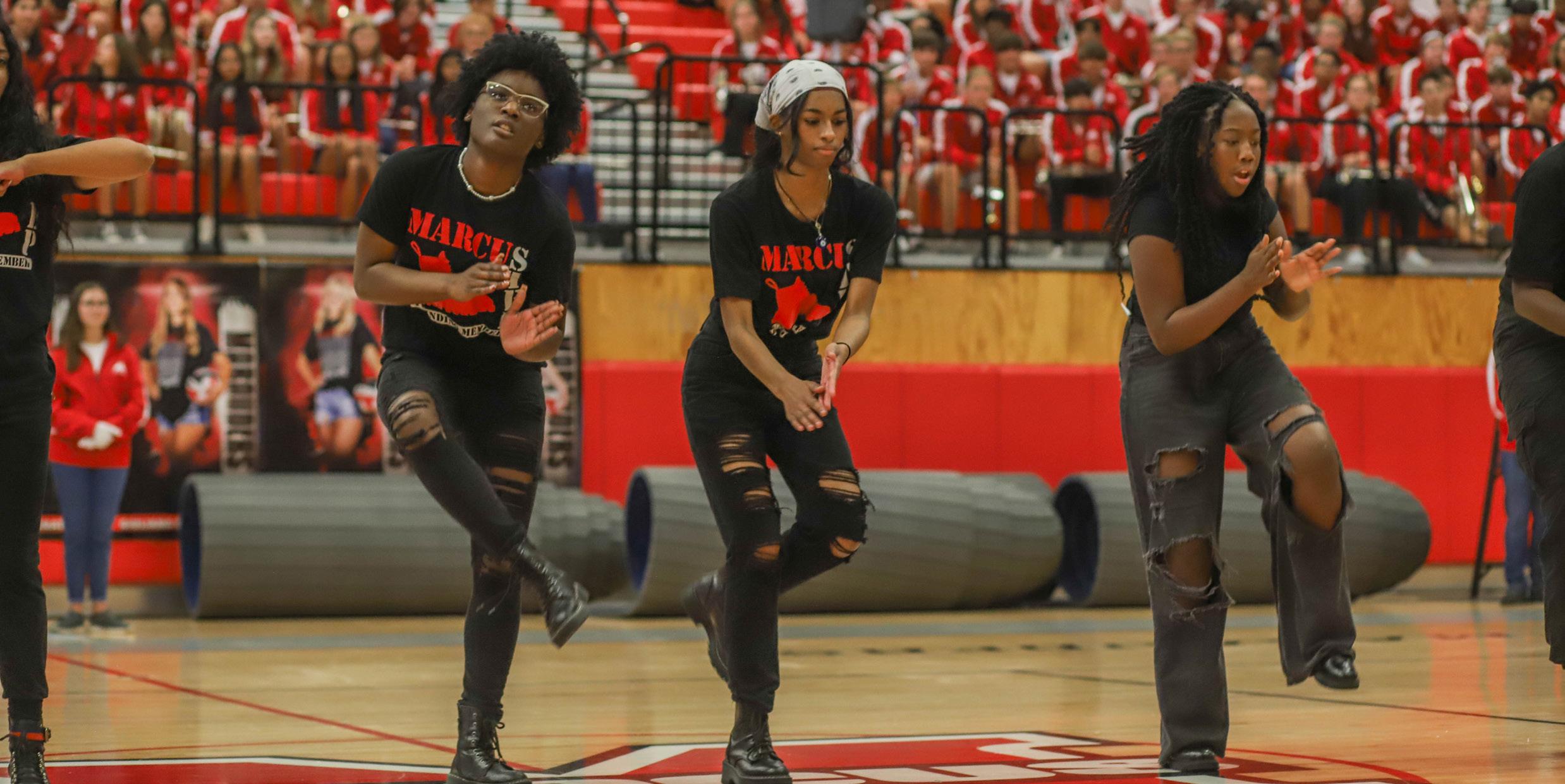
“If you’re in a predominantly White school and there are a lot of White people, there’s bound to be some of them that feel a different type of way about different races,” Jaida said. “There’s bound to be somebody racist.”
Even though the comments and insults bother her, she just takes it as part of introducing a cultural practice to a mostly White area.
“That’s just a part of it,” Jaida said. “I like to say, if you don’t have haters, then you’re not doing something right.”
After the first pep rally, a student posted a picture of the step team with a negative comment on Snapchat. Shortly after, a step team member made a TikTok directly responding to the post.
Jaida remembers opening up the TikTok bracing herself for negative comments. To her surprise, plenty of the students in the comments were on the step team’s side.
Cheerleaders, Marquettes, track, basketball, football — all types of students were in the comments section, supporting the team.
“I didn’t know how the school was going to take step,” Jaida said. “And I realized from the TikTok that they actually liked us.”
• • •
Since the first pep rally, the number of members has tripled to 27. They practice in the dance room on Tuesdays and Thursdays. Jaida teaches the team how to step from scratch, gradually piecing together separate steps into routines over the span of weeks.
“Once you understand the process of step and you have rhythm, I think it’s pretty easy to learn,” Jaida said.
In tandem with making routines that entertain the crowd, Jaida’s biggest goal is to make her teammates feel welcome. Club sponsor Melinda Bowman is proud of Jaida for creating a safe space for the team members.
“Kids need to feel like they belong.” Bowman said. “That’s why I thought it was important for the step team to have a sponsor, because I felt like I belonged where I went to high school. And I want these kids to feel like they belong.”
Jaida encourages any student who needs a community at school to make one for themself.
“If you don’t see it represented to what you want, make it yourself,” Jaida said. “Take me as an example. I built step from the ground up.”
design Alex ThornfeltCurrent theatre teacher Whitney Bollinger and Sara Bollinger were still unpacking from their honeymoon in Mexico on June 26, 2015. They had just celebrated their wedding in Denton, wanting to show their love, even though it wouldn’t be recognized by the law. The pair turned to each other when they heard a voice from their TV that stunned them. Together, they took a seat on their small couch and raised the volume. The Supreme Court was announcing its decision to legalize same-sex marriage.
People across the country wanted to jump at this opportunity — Whitney and Sara being among them since they just held their ceremony. The timing was purely coincidental but perfect. However, their excitement was put on hold when Denton County announced they would not be ready to issue licenses immediately.
All weekend, the couple anxiously waited in their apartment. Now that they had their chance, they had to take it. Finally, Sara stood up. The two locked eyes. They couldn’t wait any longer.
They woke up with the sun on Monday morning and Whitney put on a beloved blue and white striped dress. Sara, who uses they/them pronouns, buttoned up their navy blue shirt, took Whitney’s hand, and they walked out of their apartment for the last time as an “unmarried” couple. The pair rushed to the courthouse. Hand in hand, they went through the process, anticipating getting their license.
The couple happily signed all of the necessary documents and left the courthouse only to be surprised by rows of flashing cameras. Reporters were lining up to get the same story from them, but the couple didn’t know why.
They realized they were the first legal same-sex marriage in Denton County. • • •

As a theater teacher, performance
design Sarina Mahmudhas always been an important aspect of Whitney’s life. She grew up on stage as a dancer and was looking to expand her talents.
One summer in college, Whitney’s dance teacher suggested she try out for a musical called “Pippin.” As a backup dancer, Whitney spent the rest of her summer working on this production and discovered a new path.
“Being in that musical, it totally changed my trajectory of what I wanted to do,” Whitney said. “After that, I was hooked.”
But it was a different musical that led her to the love of her life — Sara.
Whitney had been in many plays before, but “Chicago” would be lifechanging. As part of the ensemble, she took on multiple roles to bring this play to life. A trained dancer, she leapt across the stage with the band playing the show’s famous jazzy tunes in the background.
She glanced over to the band and caught the eye of someone playing the upright bass. The two made sure to find each other later off stage.
At first, they just got to know each other better.
“We would sit down and have long conversations about what we enjoy,” Whitney said. “Just friends stuff.”
The pair spent most of their time together in Denton, which was home for both of them. They shared each other’s likes and dislikes, what they had in common and stories about their families.
They frequented local coffee shops, like Jupiter House, and it
became their spot.
To everyone else, they looked like a couple of friends catching up over hot drinks. The coffee shop was filled with people, all of them unaware that a love story was unfolding. The two felt at ease with each other, surrounded by the artsy posters
and creaky
I remember thinking about so many people that worked and fought for this, for us.
-Whitney Bollinger, Theater teacher
“
wooden tables. They shared coffees with little hearts made from creamer and conversations with little details that made the other infinitely more interested.
Each of these conversations brought them closer and led up to the big confession — they wanted to be more than friends.
On a series of dates, they’d spent hours at local restaurants. At the end of one of their first dates, Whitney tucked their Thai Ocha receipt away, knowing that she’d want to look back on this later. For Whitney, this was a new kind of relationship. It didn’t follow along with the heteronormative view she had for herself growing up.
“When I met my now spouse, Sara,” Whitney said. “I was definitely like, ‘I am feeling feelings for this person.”
She says she was more interested in their conversations and how their relationship developed instead of who she envisioned she’d be attracted to. She kept her relationship a secret from her close friends and family during its initial stages.
However, the secrecy didn’t last.
“My parents were just very in tune with my feelings,” Whitney said. “They know when things are going on.”
Whitney said it was scary, waiting to tell them. She understands the fear that comes with coming out and looking for acceptance from family. However, her worries were alleviated when her family showered her with support for a relationship that was still deemed too controversial by much of the world.
“My parents have always been very open and accepting of others,” Whitney said. “I just feel lucky that I grew up that way.”
Sara watched their loved ones rally around them and become a kind of second family to her when they saw how happy the couple was together. Her sister, Francie Pavelek, says she enjoys seeing Whitney in this relationship.
“They know each other really, really well,” Francie said. “They’re able to support each other, and they have a very honest relationship.”
• • •
The Bollingers had dated happily for five years. When the time came, they both knew.
“We just decided, you know,” Whitney said. “‘Let’s get married!’”
The summer of 2014, the two got engaged. While their marriage wouldn’t be legalized yet, the couple wanted to fully commit in the biggest way possible.
Their history together was in Denton, so the pair wanted their wedding and future to take place here too. The next summer, Whitney and Sara had a traditional wedding, and they brought their new kind of love into it. On the grounds of Texas Woman’s University, they walked onto the greenhouse patio where dozens of couples stood before them. The hot June sun made their joyful day brighter as they looked into each other’s eyes and said their vows.
The newlyweds went off to their honeymoon and came back to make local history. • • •
To this day, Whitney recalls their moments at the courthouse vividly.
“It was kind of a surreal experience,” Whitney said. “I remember thinking about so many people that worked and fought for this, for us.”
After the couple left the courthouse, their phones were buzzing nonstop with news stations trying to get ahold of them and visit their apartment.
“I remember we ran home and cleaned our apartment really fast so that
people could come,” Whitney said. “We call that day our 15 minutes of fame.”
Whitney’s best friend, Julie Pavelek, remembers being just as ecstatic about their accomplishment.
“I was telling everybody I knew they were the first ones to get married,” Julie said. “It was just such a happy day.”
Together, Whitney and Sara crossed a milestone for the LGBTQ+ community.
“They really are a model for what a happy marriage can be,” Francie said. “I think that they’re a really good representation for their community.”
As a teacher, Whitney is also a role model for her students. She wants to represent her community well.
Foster Carroll, her former student, looks up to the way Whitney carries herself.
“I think it’s very powerful..that she can be herself and not care what people think,” Foster said. “It is a very big statement to make to people in high school.”
Whitney works to instill confidence in her students and create an environment where they are comfortable in themselves.
“If you’re out, if you’re not, or if you are not sure…just always follow who you want to be,” Whitney said. “If I had not stayed true to myself, I would not have ended up where I am now.”

Winter has arrived, and guess what that means. Flu season! It’s that special time of year where everyone’s miserable and germs and viruses begin to spread. While everyone treats themselves differently when they’re sick, I love to cook homemade meals. I understand that many would just crack open a can of tomato soup and call it a day, and that’s totally understandable. But for me, the task of getting off my couch and cooking a nice meal changes my mood for the entire day. Completing small, mundane tasks makes me feel accomplished. While it can be difficult finding simple and short recipes, these are my top four sick food favorites.
Grilled cheese has always been a sick food staple in my household. It only consists of bread, cheese and butter and is probably the most straightforward meal that anyone can make. Using sweet sliced bread, I take the sandwich to another level of deliciousness, compared to the typical dry and boring white bread. Spreading the bread with butter accentuates the sweetness, making it taste almost like cake. I’m not a huge fan of cheese, so I use provolone and mild cheddar so that the taste would be less prevalent. Paired with the sweetness of the bread and the savoriness of the cheese, it is a perfect combination of dessert and meal. While I will admit that grilled cheese has no health benefits, it’s definitely considered a comfort food that’ll make anyone happy – unless they’re lactose-intolerant.

Chicken alfredo: This dish only required six ingredients from my pantry and took me ten minutes to cook and no recipe is required. Each bite melted in my mouth and I devoured the entire bowl in two minutes. The sauce didn’t overwhelm the meal, letting me taste traces of rotisserie chicken along with cheese in every bite. At least for the chicken noodle soup, the broth had garlic, pepper and bay leaves, adding to the amazing flavor we all love. The alfredo however, took some time to get to the exact taste that I wanted, but with some effort, I managed to make it adequate. I added spices like salt, pepper, chili powder, and chicken seasoning. For health, pasta is known to be useful in aiding gut sickness and diarrhea. And of course the chicken is high in protein and nutrients like selenium, which relieves symptoms of colds and flus.
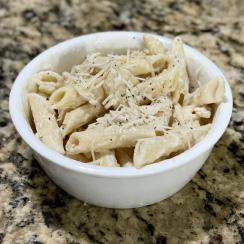 Sarina Mahmud
Sarina Mahmud
Mug
Baking a mug cake is one of the easiest desserts I’ve ever made, which is a win-win for me. I don’t have time to make an entire meal when I’m sick. All I want to do is watch ”Criminal Minds” while huddled in a blanket and chomping on something sweet. So this dessert is super convenient for lazy people like me. The cake only used nine ingredients and five quick minutes. One option is that all the ingredients can be easily replaced with healthier substitutes like whole wheat flour or almond milk. The original recipe didn’t add as much chocolate as I would’ve liked, so I ended up tripling the amount. Once I dug my spoon in the spongy cake, I could smell the deep, enticing aroma of chocolate and once I took a bite, it tasted amazing. The cake would’ve been incredibly bland if it weren’t for the chocolate chips. The chips were gooey and melty, adding to the soft texture of the cake. While I wouldn’t recommend making this dessert every time I feel under the weather, research has shown that 70% cacao can help flu and cold symptoms. It also can prevent migraines along with headaches.
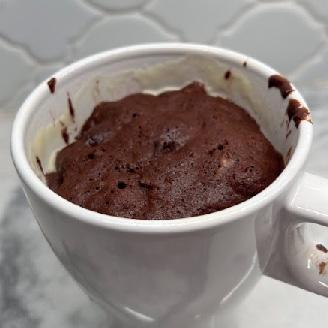
Ingredients:
¼ cup all-purpose flour
2 tablespoons unsweetened cocoa powder 3 tablespoons granulated sugar ¼ teaspoon baking powder Tiny pinch of salt ¼ cup milk
2 tablespoons oil
¼ teaspoon pure vanilla extract
3 tablespoon semi-sweet chocolate chips
This soup was suprisingly easy to make, and took about 25 minutes overall, prep and cook time included. What left me even more shocked was just how good it tasted. The broth was thick and full of flavor and paired perfectly with the soft carrots and crunchy celery. The rotissere chicken, while dry by itself, absorbed the broth so that every bite melted in my mouth. Tastiness aside, chicken noodle soup has plenty of health benefits when the body’s feeling down. The broth can relieve respiratory symptoms by providing rich hydration. Full of vitamin A and C, the vegetables build the immune system and quicken the body’s recovery time. The chicken is loaded with protein and helps loosen secretions and mucus in the throat.

Coming back to school after a short weekend can be a trial and tribulation, but a lollipop makes it so much better. We appreciate the parents who stand outside the front doors and hand out candy before school on Monday.
Pictures of students in fine arts clubs now hang in the hallway outside the auditorium, and pictures of athletes near the MAC. These additions not only spruce up the walls, they’re fun to spot yourself in when you walk past.
Marcus has not had its beloved cafes since 2020, so everyone is excited to see them return. After two years of pain and suffering (not having a sugar cookie and smoothie to tide us over during passing period), students are flocking for the best food on campus.

The more my eyes scan the bustling streets of Dhaka, Bangladesh, the more I don’t feel like I’m returning home. I pass buildings, houses I’ve visited, the hospital I was born in, but the fleeting memories from my childhood pale in comparison to the unfamiliarity I feel.
My appearance doesn’t scream “outsider,” but I feel foreign in my hometown. I remain camouflaged by my features and heritage, fitting into the sea of millions of tan-skinned, dark-haired faces swarming the streets. As far as they know, I am home.
But I feel like a tourist.
Bangladesh—the country where I was born—felt more like a vacation spot to me than my birthplace. I’ve lived in America for nearly my whole life. I turn my attention back to the roads. It’s so vastly different than the small Texan suburbs where I’ve spent most of my life. Groups of pedestrians part around the lush tropical trees that line the streets. Jewel-toned rickshaws, decorated with hand-painted elephants and peacocks wait impatiently with the rest of the traffic. Hundreds of shiny, honking cars transport their passengers, such as mothers and their out-of-place, Bangladeshi-but-not-really-daughters.
Stray dogs and street sellers cry out over the sea of car horns, adding to the rich orchestra of city life. Most would tune out the perpetual cacophony of the city, but as I take in the chaos, I pull on one sound out of the steady drone like a thread to pull me out of my stupor.
design Kaelen ReedOver the low roar of car engines, horns and turning wheels, the warm summer breeze carries voices into my ears.
“Flowers for sale!” yells a man, his face lost in the crowd. He’s not speaking English, but after picking out the faraway sounds of his voice from the loud noises of the streets, sewing each syllable together in my mind and matching his words to their meanings, that’s what I understand. The thread tightens, and I feel awake.
After a short journey, the car rumbles
each other.
Speaking with my family and staying at their home made me feel a closeness to my culture I didn’t realize I missed. Sure, I noticed a certain absence in some places—at school, for instance, where people mocked our food, our clothes, our lifestyle—but with my parents, I still felt a link. I didn’t realize how far I had alienated myself from my heritage until I made connections with my relatives.
They quickly went from strangers to distant family to friends all within the span of a few weeks. After living with them, I was able to shed the slight aversion to our culture I never realized I had. Our ties not only brought me closer to my heritage but also to other people, which was quite the achievement for a reserved, young me. Our language allowed me to make connections that I might never have had the opportunity to gain otherwise.
to a halt as the driver pulls into the winding driveway leading to my cousin’s house. Though I am still unaccustomed to the sprawling greenery and the warm tropical mist that hangs in the air, as soon as I set foot inside, I feel welcome. Noises once again fill the air, but this time they’re all voices. Now, I feel multiple threads, knitting and weaving and stitching together until they form a web of tight connections that tie us to
Even after returning to America, I never lost sight of how important making connections is. My last trip to Bangladesh helped break my insecure pre-teen self out of my shell, over new lands, new people, and a culture I hadn’t realized I’d all but left behind. Back then, it was a shared language, that common thread that tied us together like a closeknit sweater. I went from feeling lost in a big, big country to finding a small home during our stay. Nobody can definitively know where their life will take them, but after experiencing how making connections tied me to my culture and other people, I will never underestimate the power of these intricate ties.
While we appreciate the cool outdoor spaces opened for lunch and after school shenanigans, we would love to see some pizazz. Some decorations in the patios or work from the art students could brighten up an already fun part of campus.
Look, we all fix our hair and makeup with the bathroom mirrors, because we can’t be looking crusty in class. But leaving your hair ties, brushes and pulled out hair in the sinks is nasty. Clean up after yourself after cleaning yourself up.
It’s understandable when teachers keep students past the bell to finish up an assignment or clean up their table. But it’s unfortunate when you show up late to your next class without a note. To keep students from racking up the tardies, we would appreciate it if teachers could always remember to write a note.
Resting at the bottom of a box buried below an old preppy school uniform and goalkeeper gloves lay a crumpled up piece of notebook paper. On it were the typical scribbles of eighth graders: crude art, flurries of newly acquired curse words and descriptions of how much we hated school. Feeling nostalgic my eyes fell on six words written by the friend I was passing it back and forth with.
“I can smell your Jewish stench.” I took a step back. What in that
and I wanted to be like everyone else. • • •
Before coming to Marcus, I attended a private Christian school for ten years. That decade I spent with people who looked, thought and talked like me. In elementary school I did fun projects on boats that sailed the Nile or heroes of the American Revolution. Entering middle school we pivoted towards projects that would help us discover our identities.
The most impactful of these was about my Jewish name, Oppenheimer. Intended
Ashkenazi Jews in Germany as early as the 16th Century.
I didn’t expect any issues, after all we were not practicing Jews, and I hardly identified with the label. However, after learning about the Holocaust the jokes started. I didn’t find them particularly funny, but I laughed anyway and made the jokes too.
When you grow up in a setting where everyone seems the same it is just too easy to make cheap entertainment out of someone who is different, or in my case turn myself into a joke for others.
At the end of my freshman year I’d finally had enough and decided to leave.

Throughout my first year at Marcus I was exposed to new ideas and new people. I made friends I would have previously thought I never could have agreed with and began to learn from them. • • •
Part of this transition was realizing how unacceptable those kinds of comments were. For the first time in my education I wasn’t subjected to crude jokes that made me feel different.
moment could I to that friend have done to provoke that kind of comment?
I felt like someone had just thrown a brick through my rose tinted window to the past. Comments like that caused memories to come flooding back of running home crying to avoid going to football practice where I was harassed constantly. I remembered the queasy feeling of dread on the morning ride to school and begging my mom to not make me go. No one had a last name like mine,
to be a fun project where we would find or make family crests and glue them to poster boards bigger than ourselves, it turned into something that would follow me for the rest of my time there.
My mom and I spent hours researching and building the board. We cut out our coat of arms, which had a filled in Star of David adorning the center. And then we wrote the origins of the last name Oppenheimer, which was adopted by the
Looking back with an old friend we realized the absurd normalcy of these comments and the way I was affected without even knowing it at the moment. I wondered if any of the people who insulted me even remember what they said. I had kept that crumpled note for a reason when I left the school, even if I didn’t know why. Six years later when I found it I understood. Throwing it away wouldn’t have made any of the feelings go away. Keeping it made me realize how deeply those words hurt.
design Kaelen Reed“
I felt like someone had just thrown a brick through my rose tinted window to the past.
“Euphoria” has garnered nine Emmys, WAP was number one on the Global Billboard 200 for three weeks, and “Do Revenge” was on Netflixs’ top 10 movies for 15 days.
These are all connected by one factor – its teenage audience. The large amount of teenagers watching is unsettling when you notice how inaccurate the portrayal of people in high school really are. Film has always been something special for me and became the area I wanted to pursue since 7th grade.
Yet the more dark teen dramas and coming-of-age content that gets forced out by money-hungry executives, the more I feel like my life isn’t as cool or interesting as I see it, and there’s an insecurity that starts to come from that. High school obviously doesn’t have the constant series of plot twists and character arcs that studios want, but that doesn’t mean media that shows realistic lives of teenagers and keeps the creators’ vision aren’t able to be made so that it’s core audience can connect.
Often I’m watching scenes of what are meant to be 15-17 year olds doing things that in all honesty, most people this age just don’t do.
Hard drugs and smoking or solving murder cases all before characters go to class the next morning has become
a norm with what this high school audience sees, despite most of it being far beyond this messy age.
It can seem harmless, but when this is a constant in media that’s made for teenagers to consume, it festers. Doubts start to form and confidence falls away from every little thing that you say or do.
What I see are characters that are meant to be and act the same age as me,
We’re young, and there’s always going to be flaws within us, but that doesn’t mean those should be seen as out of the ordinary. There’s few and far between in this media that presents teenagers trying to balance relationships with friends, family, and school.
It’s rare to see girls supporting girls because of the constant pitting against one another. And of course, the awkward interactions that follow new experiences for the weird in between of no longer being a kid but not yet an adult.
but rarely do. There are 26 year olds who take on the role of 16 and with that, you see how an adult acts and looks, not someone my age.
You begin to question why your skin isn’t clear or why you don’t have the “ideal” body that repeats and repeats until that’s what I think I’m meant to look like.
Together, it creates a romanticization of adult substances and an impossible standard for teens going through an age of exploring and defining who you are.
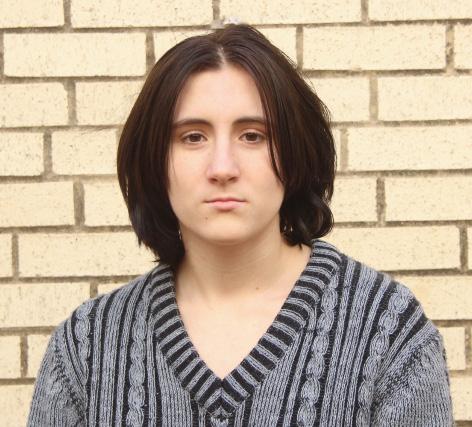
Having teenagers see themselves, their real, genuine selves, on the screen is a change to stand for. We need less “Riverdale” and more media like “I Am Not Okay With This”; a series that has teenage actors playing characters their age and shows the experiences of dealing with emotions fueled by changing bodies and circumstances, relationships and the messy, complicated ways they unfold, and identity struggles while still staying true to the realities of being high school aged.
The truth is, being a teenager is a difficult and confusing time for almost everyone going through it. Media is a source of comfort for many, so that comfort should allow us to be honest about how we are.
I want to see teenagers that are stressed and tired and sometimes just confused about everything because that’s the way it truly is.
“That was boy behavior. You’re such a man.” -Newsroom
“Just one girlfriend? Where’s the fun in that?” -W Hall
“He just got his license, our little boy is all grown up.” -Cafeteria
“I have stuff to do but I just don’t wanna do it. Who’s gonna stop me? No one.” -C Hall
design Kaelen Reed“The crickets
congregating!” -W hall
“He’s 6’2 and a freshman, he drives the same as car as you, he plays the same sport as you, he’s better than you.” -W Hall
“They have the brains of chimps. And chimps are smart but not really.” -Newsroom
“A loan is just free money”W Hall
“What’s wrong with my dogs? What’s wrong with my feet?”- W Hall
“America is my favorite continent.” -Marauder Gym
are
I guess like clubs and stuff but we already have those. So you can work on telling them about scholarships for minorities
-Phillip Ponds, Senior (White)

Activities and cultural clubs only go so far. It’s about teaching that awareness that you have to watch what you say. If someone tells you that what you are saying is not OK, it’s not a personal attack, it’s just not OK. You have to understand that you can’t just laugh it off as a joke or just get offended.
-Vi Ngo, Junior (Asian)

Maybe make more clubs for people of color. Like, we have Black History Club and Multicultural Club, Spanish Club, so maybe make some more clubs for people from other backgrounds like Arabic, German, that kind of stuff.
-Jonas Bob, Junior (Black)
Make something to make people like more involved, so people could learn about other people, like Hispanics. They could make it a club or class or something so people could take time to learn about those things, like a cultural education class.
-Pamela Leon, Sophomore (Hispanic)

When you’re a racial minority in a mostly White school, you get used to feeling out of place.
You feel it when you walk into a new class and see that you’re the only student of your race there. You feel it when you unconsciously strive to disprove the stereotypes. You feel it when you have to answer the teacher who often picks you out of the entire class to answer the race-based questions. And while it’s sad, these experiences aren’t surprising after they’ve happened enough.
But hearing racist comments from people who are supposed to be your friends never stops hurting.
When people grow close enough to their friends who are racial minorities, they think making jokes about their race is okay. They think it’s fine because after they make the jokes, their friends will usually laugh or even participate.
But minorities usually just play along because they are too afraid to stand
up for themselves. They don’t want to “ruin the vibe” or risk the friendship by speaking up. But most of the time, the joke was disrespectful and wrong.
It’s scary to stand up to even one friend, let alone an entire friend group if you’re the only minority present. It’s easy to internalize the racism and start to repeat it if you just want to be accepted.
In our community, minority parents teach their children to handle racism by pretending it doesn’t bother them. Black kids especially are warned against speaking up, so they won’t come off as an angry Black stereotype. This is because if you acknowledge racism for what it is in a predominantly White community, you’re in danger of being labeled as “woke” or “controversial”.
But treating our classmates with respect is not political. It’s the bare minimum.
If someone brings to your attention that you hurt them, they are not asking you to beat yourself up. They are asking
you to learn from the experience and apologize.
When someone shares that your comments hurt them, it’s easy to retreat into a victim mindset and view the confrontation as a personal attack. But if you’re more concerned with protecting your ego than listening to your friend, you should ask yourself if you actually care about them.
Some of us grew up exposed to harmful ideologies about race. As children, some of us made racist comments because it was all we knew.
But at a certain point, you have to be responsible for yourself. By high school, your ideas and actions are your own. If you’re almost an adult and are still using racist comments as a humor tactic, you are responsible.
We can’t fully end racism. But its power fades when students of color start to stand up for themselves. It fades when we all gain the humility to apologize when we’re wrong.
Kaelen Reed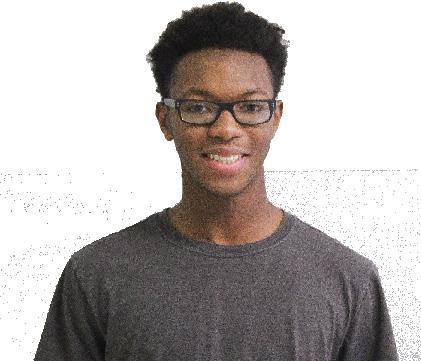
What can the school do to make itself more inclusive for minorities and people of color?





On Jan. 6, the Marauders bounced back with a 70-42 win over Flower Mound, after losing in their first district game against Plano 48-40. In the first quarter, the teams traded points, each score immediately followed by roars from their student sections. By the second quarter the team steadily built a lead then never looked back, leaving the home crowd happy with a win.


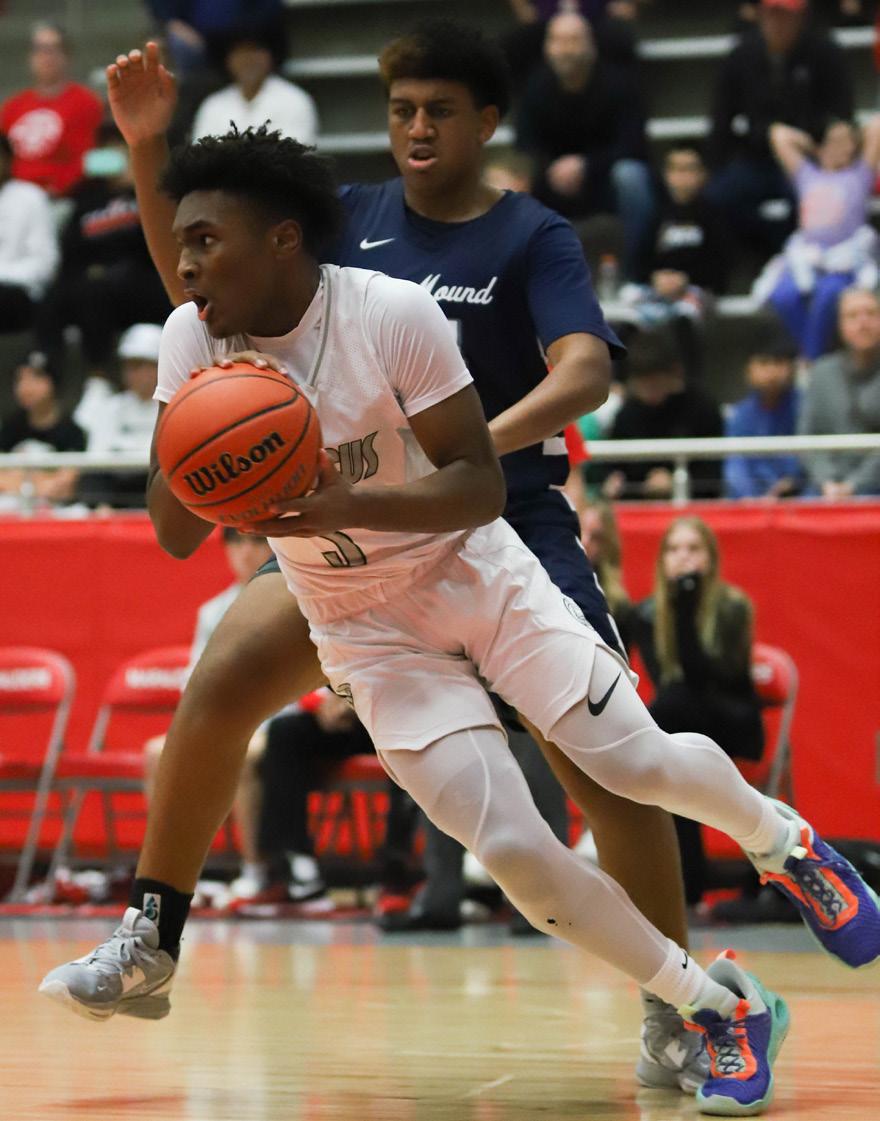
 design
Alex Thornfelt photos Ana Myers-Olvera
Sophomore Frankie Chiakpo going up for a layup against a Flower Mound defender.
Sophomore Jayden Ramnanan drives past his defender on the baseline. Ramanan made the All-Tournament team at the Carlisle Krueger Classic Tournament earlier this year.
Freshman Luke Susko dribbles toward the basket guarded by two Flower Mound defenders.
design
Alex Thornfelt photos Ana Myers-Olvera
Sophomore Frankie Chiakpo going up for a layup against a Flower Mound defender.
Sophomore Jayden Ramnanan drives past his defender on the baseline. Ramanan made the All-Tournament team at the Carlisle Krueger Classic Tournament earlier this year.
Freshman Luke Susko dribbles toward the basket guarded by two Flower Mound defenders.